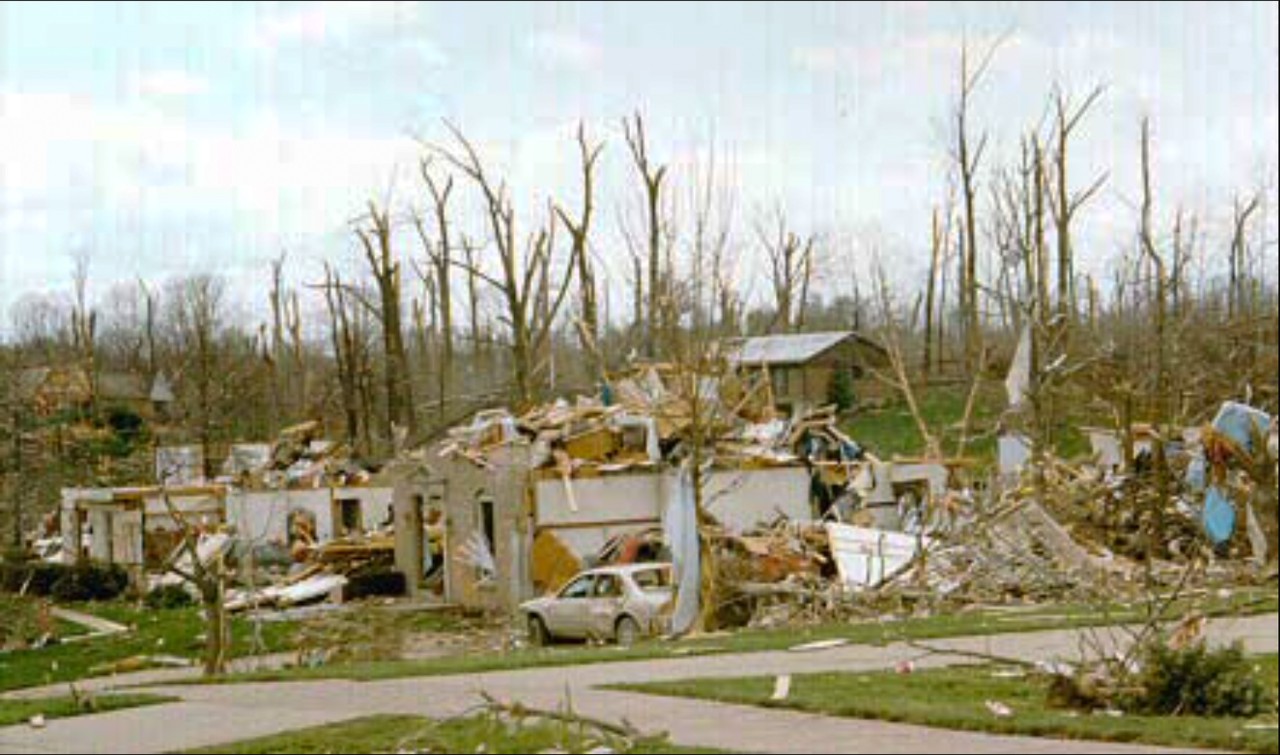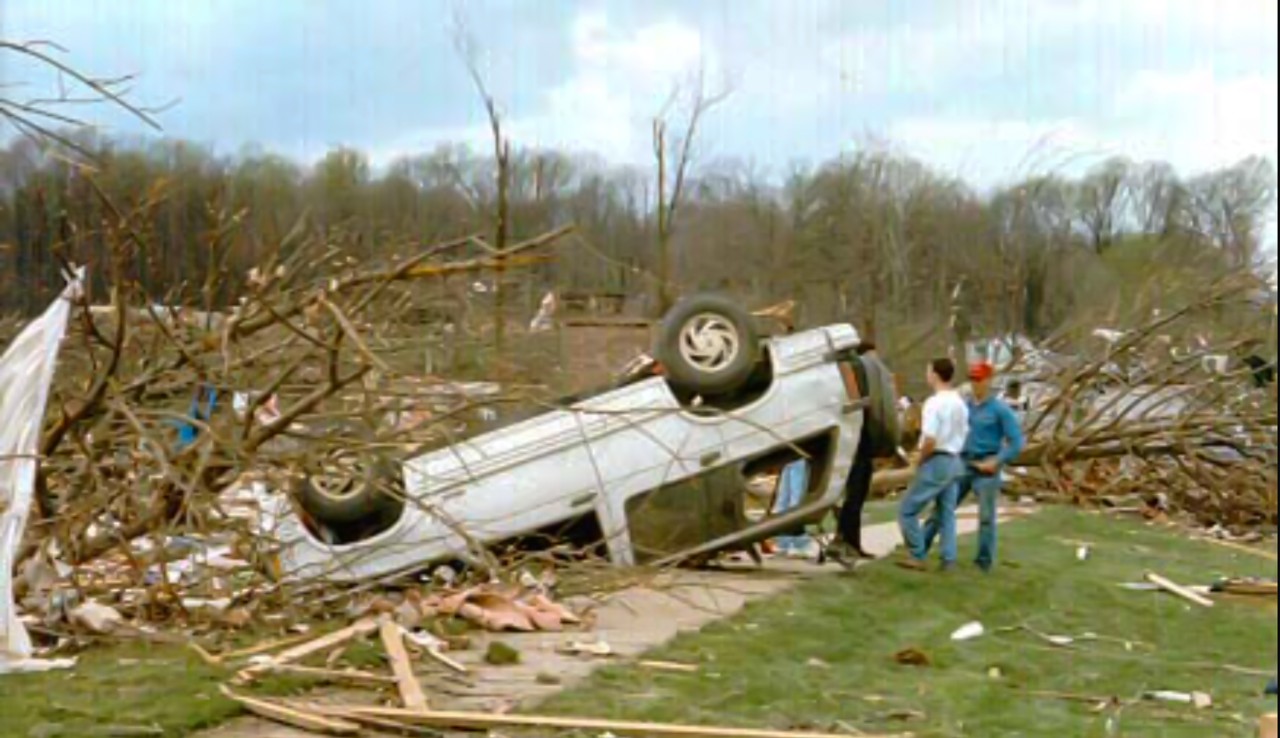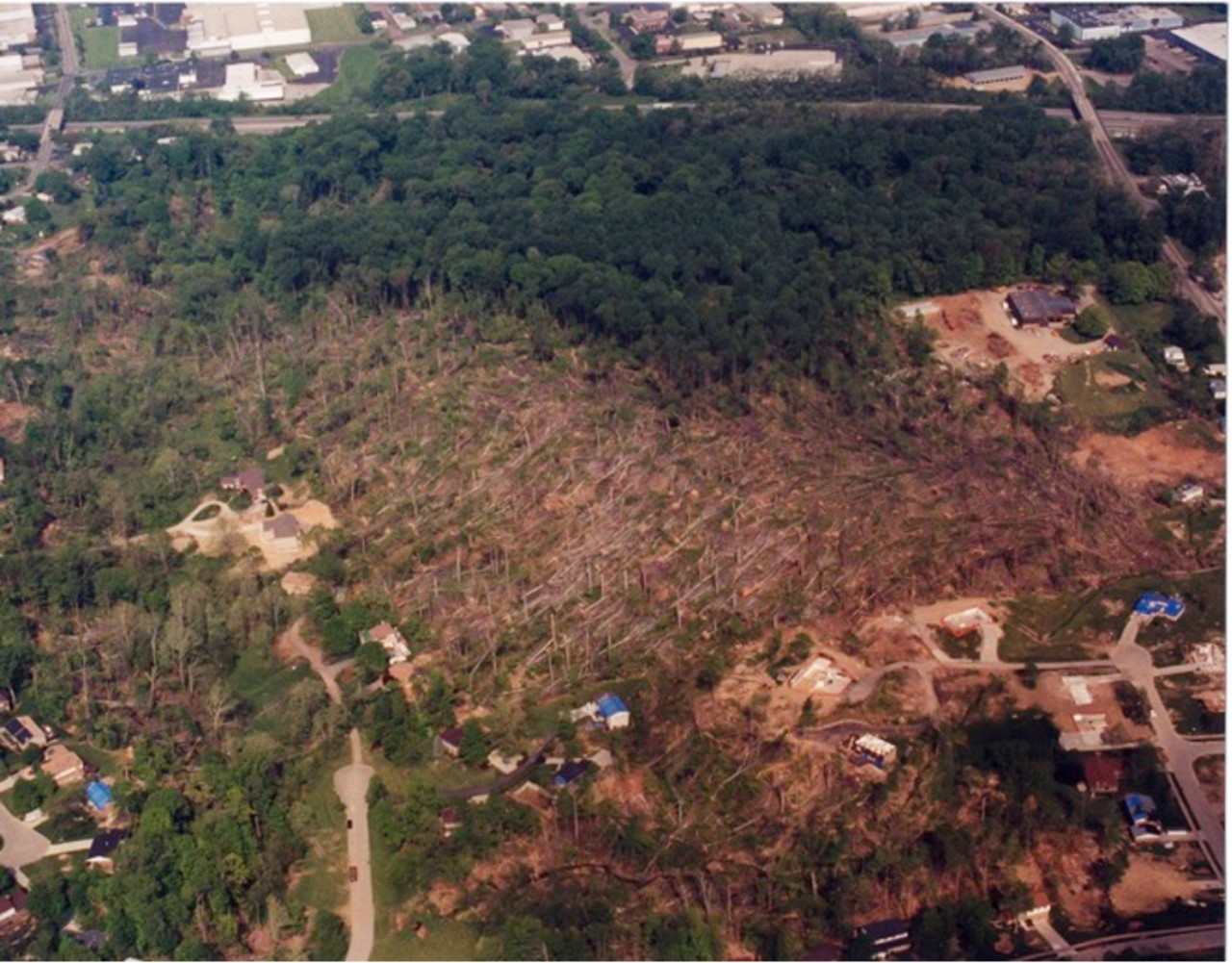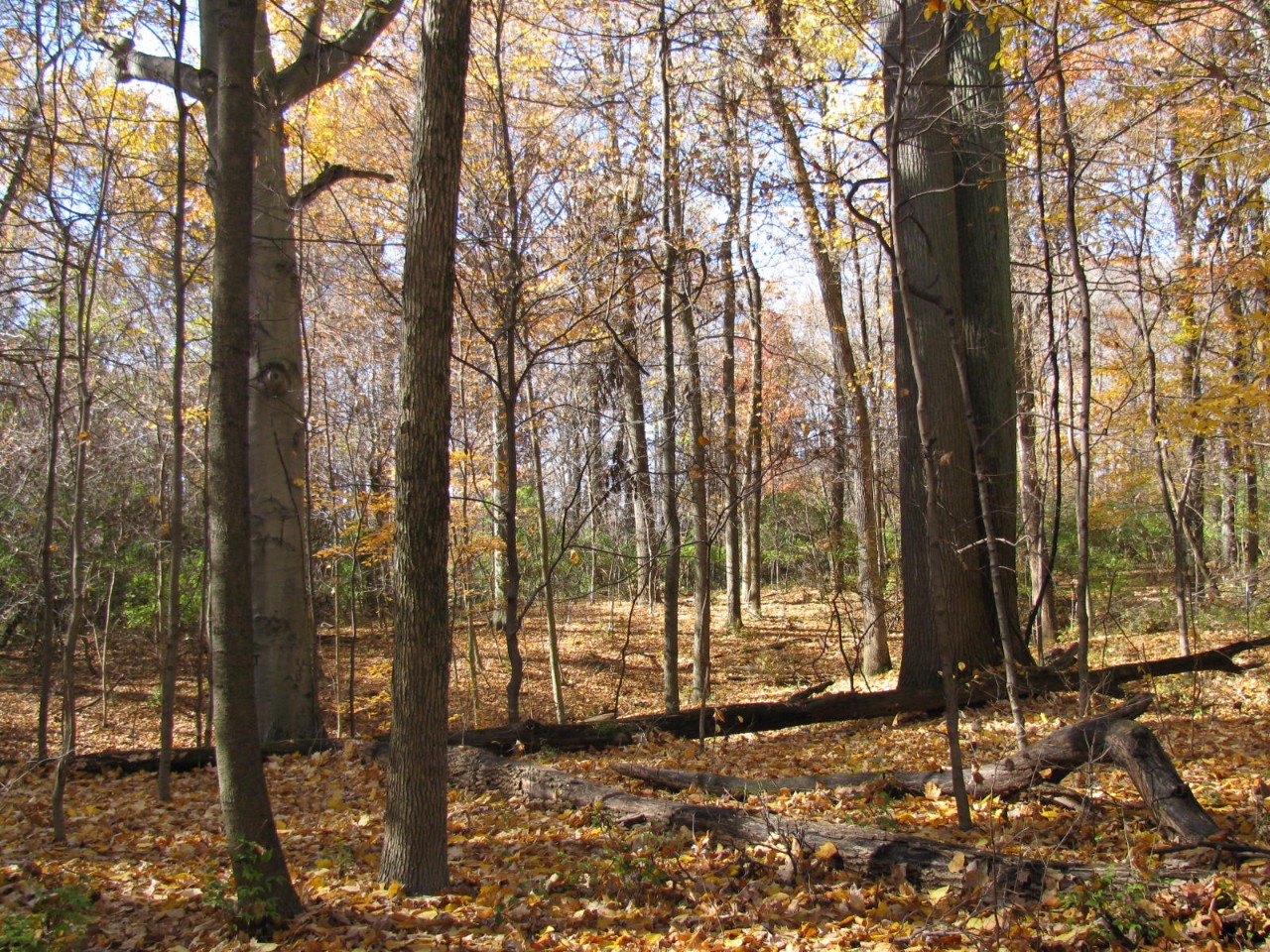
Tornado's effects linger 25 years later
UC wraps up long-term study of Ohio forest damaged by lethal storm
A long-term study at the University of Cincinnati has documented the rise of invasive species in a forest devastated by a tornado 25 years ago.
The EF-4 tornado on April 9, 1999, carried wind speeds of more than 200 miles per hour as it barreled through suburbs north of Cincinnati, according to the National Weather Service. The storm killed four people and destroyed more than 200 homes in the suburbs Blue Ash and Montgomery.

A tornado killed four people, destroyed 200 homes and damaged 400 others in Blue Ash and Montgomery in 1999. Photo/National Weather Service
And it devastated a good part of the Harris Benedict Nature Preserve, 64 acres of hills, creeks and deciduous forest that UC oversees. The storm flattened trees and sheared the tops off others.
Since the storm, biologists in UC’s College of Arts and Sciences have documented the forest’s recovery in four detailed botanical surveys. Their findings are shedding light on how major disturbances can have lasting and unexpected consequences for biodiversity, lead author and UC Professor Theresa Culley said.
The study found that forests have the capacity to regenerate after a major disturbance but often with fewer native species and more nonnative, invasive ones.
“We know the forest is growing back. That’s good. But what’s the composition of those plants?” Culley said. “We see a decline in some native tree species that normally would be there and more invasive species.”
The study was published in the journal Ecology and Evolution.

An aerial photo from 1999 shows a large section of the Harris Benedict Nature Preserve that was destroyed by a tornado. Nearby homes have blue tarps covering roof damage from the storm. Photo/Provided
A storm to remember
Study co-author Marjorie Bécus survived the storm at her home near the preserve. Tornado sirens woke her at 5 a.m.
“I turned on the radio. It said this is an emergency — go to your basement — so I did,” she said. “I took my cat who was sleeping on the bed. There was a TV down there and they were tracking it. All of a sudden, there was a loud noise outside and the lights went out.”
Minutes later, there was a knock on her front door.
“I didn’t have a flashlight. I found my way to the front door and it was two of my neighbors checking on me. I looked out behind them and said, ‘Are those my trees?’”
The storm had uprooted and toppled trees along a 10-mile path of destruction.
You’d drive around and see signs for wooded lots for sale and a couple weeks later, they had to mark out ‘wooded’ because all the trees were gone.
Marjorie Bécus, UC graduate
“You could see the scar the tornado left all the way up into Clinton County,” she said. “You’d drive around and see signs for wooded lots for sale and a couple weeks later, they had to mark out ‘wooded’ because all the trees were gone,” she said.
Once Bécus learned the extent of the damage in her neighborhood, her concern turned to the preserve where she had done her graduate research at UC. The entrance was still closed a week after the storm, but she hiked in from the road.
The forest in 1977 was designated a National Natural Landmark by the National Park Service for its “exceptional value as an illustration of the nation's natural heritage.”
“Everything was down. And in the section that wasn’t completely wiped out, there were holes in the forest from where trees had been knocked down,” she said.

Professor Theresa Culley, a biologist in UC's Department of Biological Sciences, stands in a grove of nonnative, invasive Callery pear trees in the Harris Benedict Nature Preserve in this 2019 photo. Photo/Joseph Fuqua II/UC
Researchers, including co-author and UC Professor Emeritus Guy Cameron, compared damaged sections of the forests to sections that were left intact by the storm. They found that the number of tree saplings, shrubs and vines increased dramatically after the tornado but then began to decline after 10 years.
The dominant shrub in the disturbed area was Amur honeysuckle, a bush from China introduced to the United States as an ornamental plant more than 200 years ago. It has quickly spread to wild forests. Its leaves turn green earlier in the spring and stay green later in the fall, shading out other plants.
Meanwhile, native shrubs and vines like green briar, maple leaf viburnum and spicebush disappeared in the damaged section while persisting in the undamaged forest.
Researchers also found large stands of Callery pear trees, a tree introduced by horticulture that has spread to many wild forests. Today, Ohio bans the sale of Callery pear trees.
Professor Culley serves on the Ohio Department of Agriculture’s Invasive Plant Advisory Committee, which identifies invasive species that pose an economic or environmental threat to Ohio. She also serves on the Midwest Invasive Plant Network, which similarly examines the issue across the central United States.

UC conducted a long-term study of the Harris Benedict Nature Preserve to document its recovery after a deadly tornado destroyed acres of forest. Photo/Theresa Culley
Culley studies plant communities in oceanic islands. The landlocked Harris Benedict Nature Preserve is like an island surrounded by city development rather than water.
“This is a preserve embedded in an urban landscape,” she said.
Researchers found that invasive species such as honeysuckle sprouted in high numbers before thinning out. But the largest of these bushes continue to dominate the understory of the disturbed forest.
“So we have fewer plants over time, but the ones that remain are huge and produce a lot of berries,” she said.
Culley said a warming climate is creating more frequent and damaging storms. Their findings could help foresters and conservation managers understand the vulnerabilities of forests after a disturbance, she said.
“Fifty years ago, this type of tornado was a rare occurrence. Now we’re seeing more and more of them around the world,” Culley said.
Featured image at top: UC conducted a long-term study of a forest partially destroyed by a 1999 tornado that wiped out homes including these. Photo/National Weather Service
Next Lives Here
The University of Cincinnati is leading public urban universities into a new era of innovation and impact. Our faculty, staff and students are saving lives, changing outcomes and bending the future in our city's direction. Next Lives Here.
Related Stories
Ancient Maya used sustainable farming, forestry for millennia
June 24, 2022
University of Cincinnati researchers found evidence of sustainable agriculture and forestry spanning a millennia in one ancient Mayan city.
UC project targets pesky mosquitoes’ genes
February 21, 2022
Researchers at the University of Cincinnati examined genetic material of three species of mosquitoes responsible for killing millions of people around the world each year. In a collaboration between UC’s chemistry and biology departments, researchers revealed the surprising genetic modifications female mosquitoes undergo, in part to create the next generation. Using tools called liquid chromatography-tandem mass spectrometry, researchers found as many as 33 genetic modifications in the transfer RNA of female mosquitoes. Like DNA, transfer RNA serves as the building blocks of life, communicating the genetic code from DNA to build new proteins that regulate the body’s tissues and organs.
Hungry eyes: Spiders lose vision when they’re starving
April 20, 2023
Biologists at the University of Cincinnati discovered that underfed jumping spiders lose light-sensitive cells that are key to their vision.
